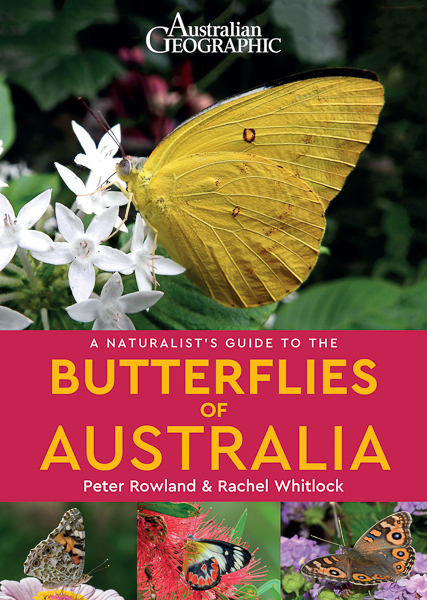 |
This easy-to-use identification guide to the 280 species of butterfly most commonly seen in Australia is perfect for resident and visitor alike. High-quality photographs from Australia's top nature photographers are accompanied by detailed species descriptions, which include nomenclature, size, distribution, habitat and habits. The user-friendly introduction covers the rise of butterflies, pest and pollinators and the life cycle of butterflies. Also included is a checklist of the butterflies of Australia encompassing, for each species, its common and scientific names and is IUCN status.
Peter Rowland is a wildlife conservationist, educator and nature photographer, and worked at the Australian Natural History Museum for a period spanning 20 years. Peter has travelled extensively throughout Australia as a biodiversity consultant, and has written and co-authored 12 books on Australia's wildlife. In 1999, Peter was the recipient of a Whitley Award from the Royal Zoological Society of New South Wales.
Rachel Whitlock has studied biological science at The University of Queensland (UQ) and the Queensland University of Technology (QUT), and is currently researching insect systematics and taxonomy. She is interested in exploring Australia's unique faunal diversity and how evolution has helped shape it, alongside engaging and educating the general public about biodiversity and conservation.
This new guide is a welcome addition to the Naturalist's Guide series, extending its coverage of South and South-East Asian butterflies to Australia and its immediate islands. Like the other books in the series, it is aimed at the general naturalist who would like to put a name to most of the species he or she sees, rather than the butterfly specialist who insists on identifying absolutely everything. This limited ambition allows the guide to be light and compact, easily carried in a pocket or stuffed into luggage without adding to the weight. Exclusive use of photographs of living butterflies further adds to its attractiveness to the general reader.
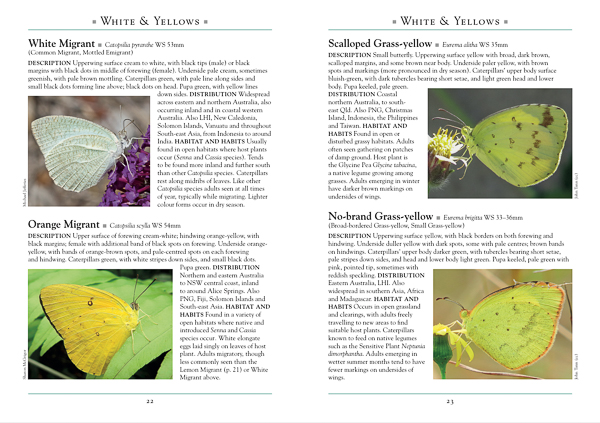 |
At last count there were 435 species of butterfly in Australia, of which about 300 are described and illustrated in the book. If not comprehensive, this is nevertheless a very good proportion of the whole, especially considering that all the most common species are there. The inevitable downside is that individual entries are short (two species to a page) and space for pictures is limited. This is not so much a fault as a necessary restriction imposed by the format, requiring the author to choose what is included and what is left out. Interestingly, the various books in this series have taken slightly different approaches here.
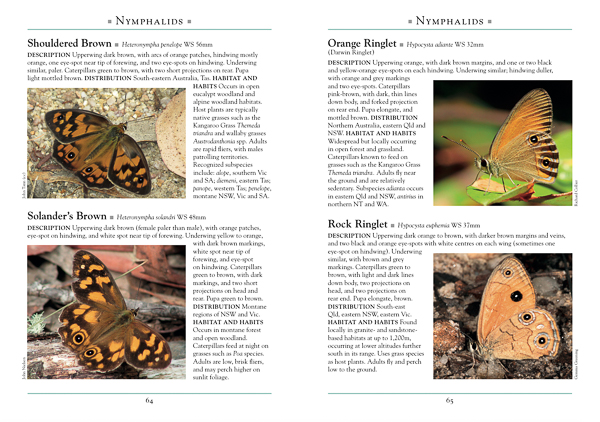 |
The present volume uses one or at most two photos to illustrate each species. These are generally of high quality and give a good flavour of the butterfly, even if in many cases it means you only see one surface of one sex. The accompanying text descriptions are surprisingly brief with regard to markings, and unusually for an identification guide give no direct pointers to the separation of similar species. I imagine this is a conscious decision as it is universal - every butterfly is described in itself, without comparison with others - but it does make identification a little bit harder. The superficially similar Large Green-banded Blue (Danis danis) and Small Green-banded Blue (Pychonotis caelius), for example, are nine pages apart without cross-reference, and the Tailed Green-banded Blue (Nacaduba cyanea) comes somewhere between the two - again, without mention of the others. In isolated instances similar species are cross-referenced (the Pencilled Blues, for instance) but there is no attempt to say how they can be distinguished. Text space is saved, but at a cost, in terms of species recognition. The author uses this freed space to describe the caterpillar and pupa of each butterfly (something not done in other Naturalist's Guides I own) and devotes a big chunk of each species account to habits and habitat. In a real sense, this gives a better overall picture of the species and encourages a more ecological, whole-butterfly approach both to identification and to understanding the butterflies. It does, however, make the book a little less user-friendly for flicking through your holiday photo album and identifying all the snaps.
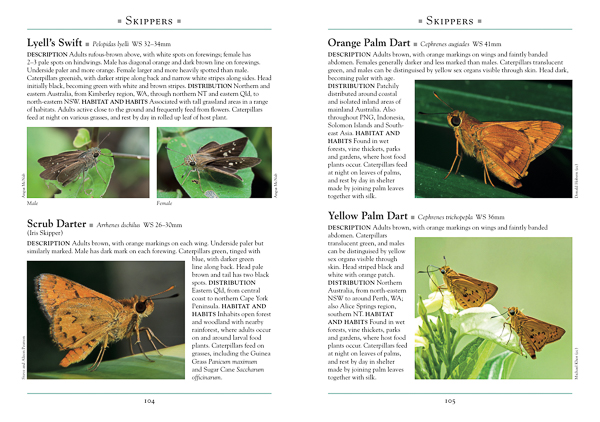 |
The book opens with a brief introduction to butterflies, including sections on their evolution, their relation to agriculture as pests and pollinators, and their life cycle, and concluding with a glossary of terms used in the book. At the end of the species descriptions is a useful checklist of all Australian species together with an indication of where they are found. This is a valuable resource, especially in the internet age. If you find a butterfly that seems not to be included in the main pages you can google the related species occurring in your area.
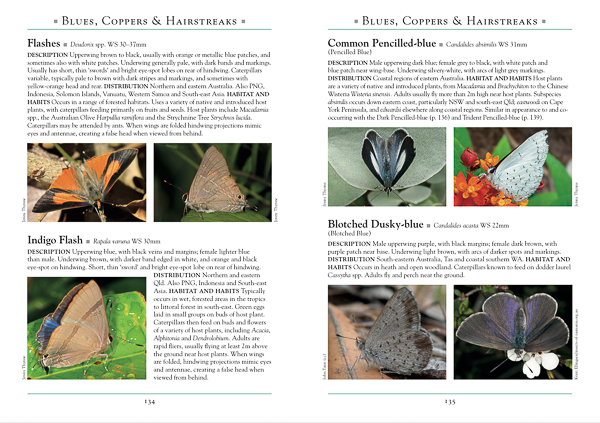 |
In conclusion, this is a handy and practical guide to most of the butterflies you are likely to see in Australia, easily carried in the field and well illustrated. The novice or casual lepidopterist will find it an excellent introduction to the species, bringing in as it does those useful notes on early stages, habits and ecology. For the serious butterfly-watcher, it will prove inadequate on its own and sometimes frustrating, but is nevertheless an excellent addition to the library with its wealth of photos of living butterflies. At the price, like all the titles in this series, it comes recommended.